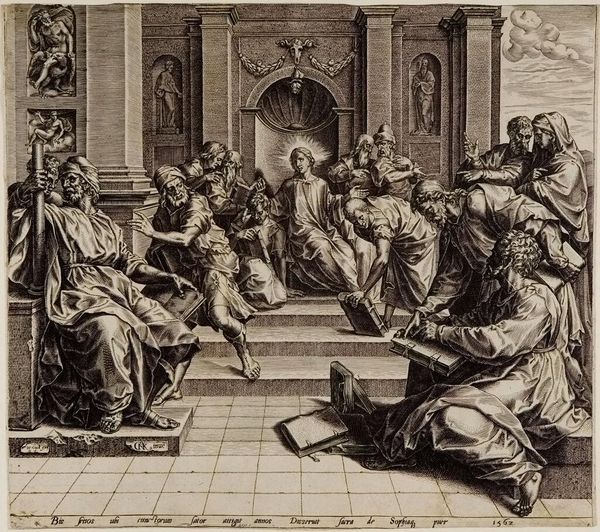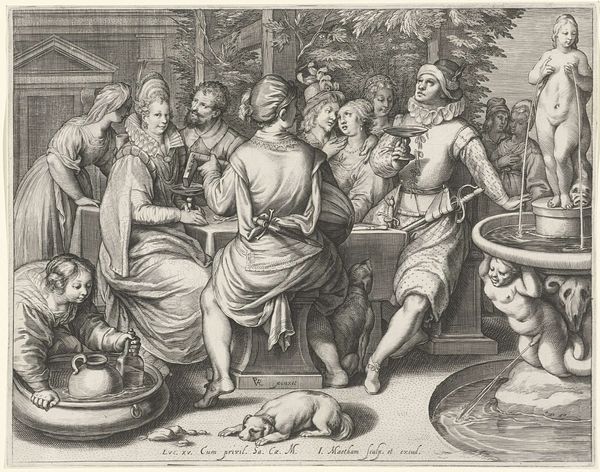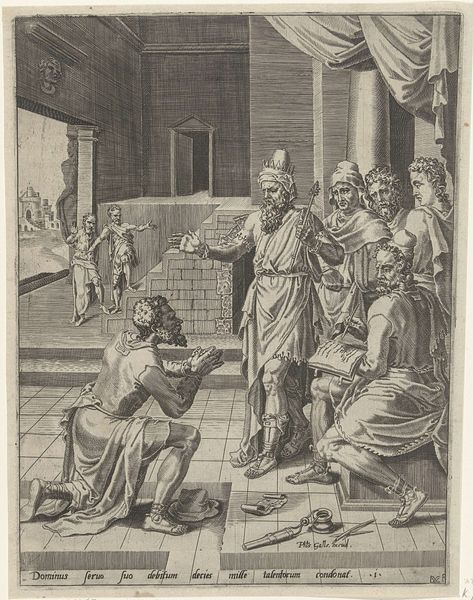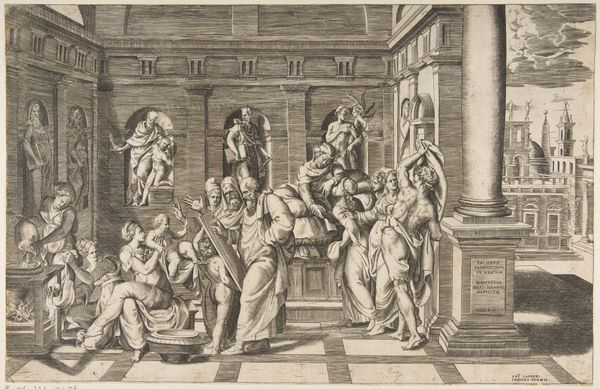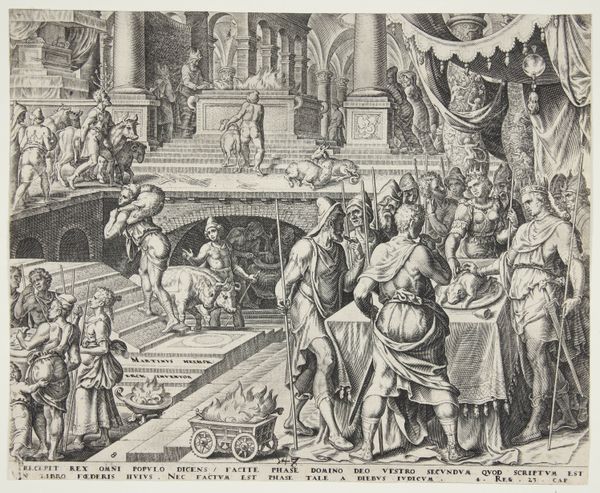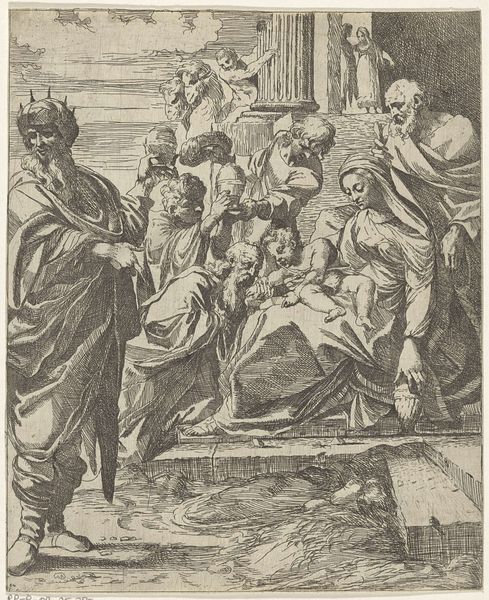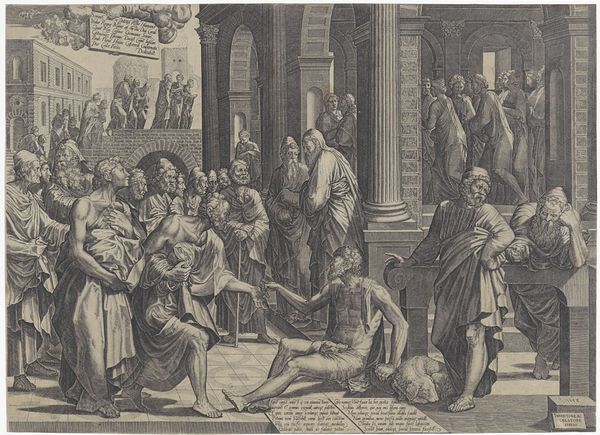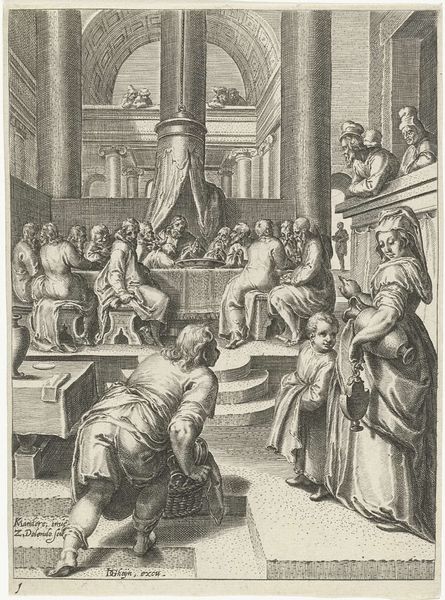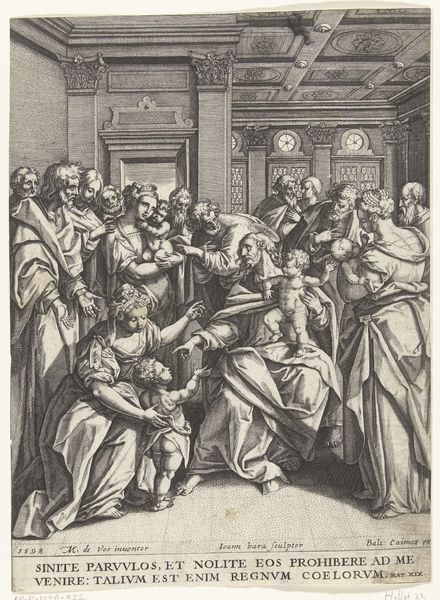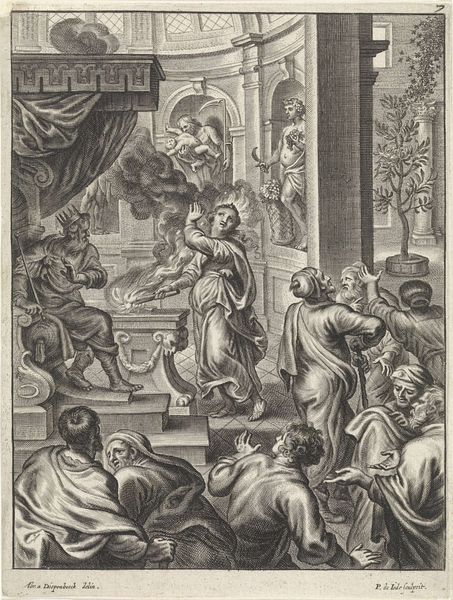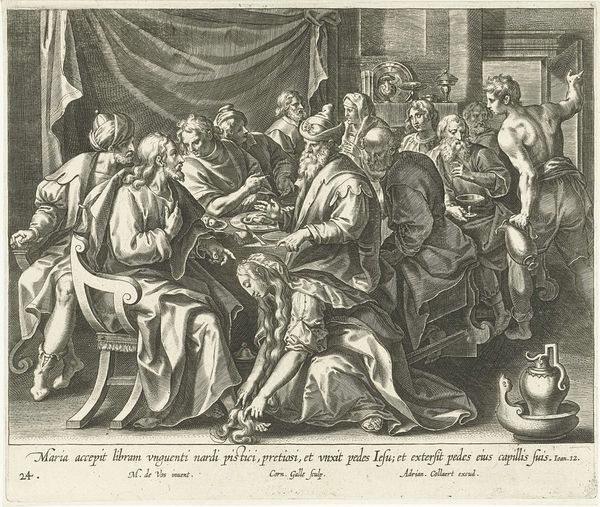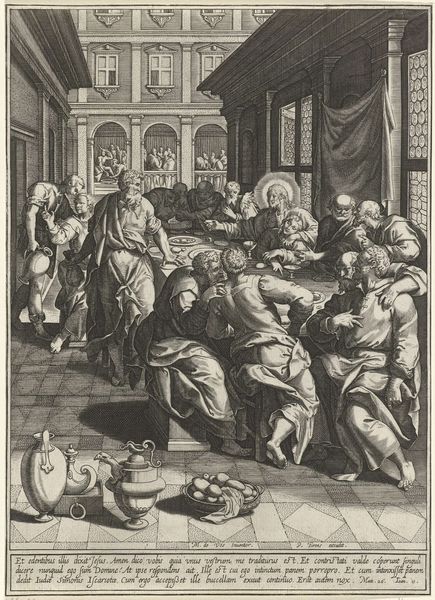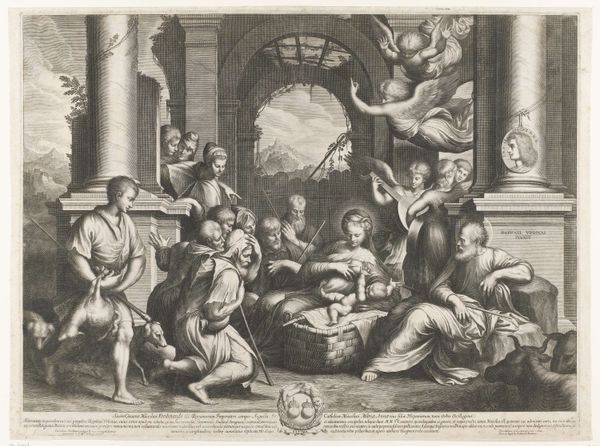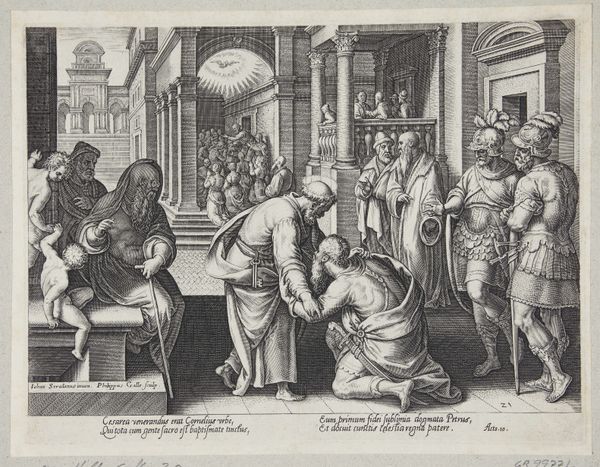
Christus, op 12-jarige leeftijd, in discussie met de schriftgeleerden before 1601
0:00
0:00
corneliscort
Rijksmuseum
print, intaglio, engraving
#
narrative-art
# print
#
intaglio
#
old engraving style
#
figuration
#
11_renaissance
#
portrait drawing
#
history-painting
#
engraving
Dimensions: height 287 mm, width 321 mm
Copyright: Rijks Museum: Open Domain
Curator: Cornelis Cort created this engraving before 1601, titled "Christus, op 12-jarige leeftijd, in discussie met de schriftgeleerden," which translates to "Christ at 12 years old, in discussion with the scholars." Editor: It's amazing how Cort captures such dynamic energy with just lines and shading. The scene feels tense; the composition tightly packs a group of men around a radiant, youthful figure. Curator: Absolutely, and placing it within the historical context of printmaking, we can consider its wide dissemination. How did printed images impact religious and intellectual discourse during this period? Editor: We see echoes of that dynamic power play in modern conversations too, whether regarding age, gender or who controls the narrative. I mean, who gets to question the establishment? Here, a child challenges presumed authority. Curator: Right, the piece really provokes questions of power and representation, especially regarding age and wisdom, challenging traditionally hierarchical systems of learning and the male dominated sphere of religious authority. Look how Christ’s androgynous presentation also serves to complicate identity! Editor: You bring up fascinating points! But stepping back, I’m struck by the architectural details, from the classical sculptures to the arches. They emphasize how the Church often embeds its power in grand architectural statements. Curator: And this deliberate architectural embedding reinforces specific ideologies, connecting with socio-political structures and power dynamics prevalent in art during the time. The Church’s financial support, its role in promoting specific narratives. How did institutions shape not only production but public perception of religious art? Editor: That connection, where art acts almost like state propaganda through controlled patronage and message framing, really makes me think about how the establishment used images to justify societal structures. Curator: By looking at the socio-cultural impact and politics inherent in Cort's piece, we have the chance to delve deeper into intersectional perspectives. Editor: It's truly compelling to reflect how works like this acted not just as religious icons but as active participants shaping wider societal ideologies.
Comments
No comments
Be the first to comment and join the conversation on the ultimate creative platform.
